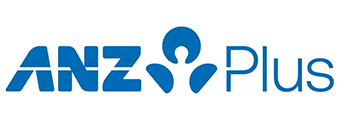
- Economists at the big four banks are forecasting interest rates to fall in 2024
- Those at CBA think the RBA could cut rates as early as the first quarter of next year
- Meanwhile, ANZ doesn't think cuts will be on the cards any time soon

Aussies holding home loans have been dealt a dozen rate blows since May 2022 as the Reserve Bank of Australia (RBA) hiked the cash rate up to a decade-high of 4.10%.
Meanwhile, the average variable home loan interest rate rose from 2.86% in April 2022 to 6.24% in June 2023, according to RBA data. That would have seen the repayments on a $600,000, 25-year mortgage climb from around $2,800 a month to approximately $3,950 a month – a $1,150 per month increase. Ouch.
Fortunately, such painful hikes might be over. The central bank’s board held the cash rate steady for two consecutive months (July and August), and whispers that the cash rate will soon begin to fall have started to circulate.
However, if interest rates go down in 2023 it would come as a shock to some of the nation’s most prominent economists.
It’s also worth noting that the cash rate might not fall to the recent lows we saw only a few years ago. If we cast our minds back to the 2010s and the Covid-era, we’ll remember that the RBA underwent a series of semi-regular rate cuts, culminating in the cash rate hitting an all-time low of 0.10% in November 2020.
So, how long will interest rates stay this high and when we might see them go down significantly? Well, that's a matter for debate.
Let’s start with what economists at the big four banks are forecasting. Their opinions differ notably, but the majority believe the cash rate will likely ease some time in 2024.
CBA analysts - early 2024
The biggest of the big four expects the RBA to keep the cash rate on ice for now. It believes cuts will begin early next year.
“From here we expect the RBA to remain on hold 'till [the first quarter of 2024],” CBA senior economist Belinda Allen said.
“We then expect … the RBA to commence an easing of monetary policy as the economy slows, inflation moves back into target and the unemployment rate lifts.
“We expect the cash rate to move back down to a more neutral level over time to around 3% … by the end of 2024.”
NAB analysts - second half of 2024
CBA’s slightly smaller peer is tipping one more rate hike this year. Assuming another 25 basis points hike, the cash rate could then peak at 4.35%. NAB then foresees rate cuts beginning in August 2024, with the cash rate to return to around 3% by early 2025.
“The RBA saw a credible path to return inflation to target at the current cash rate in August, and given the recent flow of data, is likely to retain that assessment in September,” NAB economist Taylor Nugent said.
“NAB expects the data flow over the next few months, however, to see the RBA act on their tightening bias, and we pencil in one additional hike in November.”
Westpac analysts - late 2024
Like CBA before it, Westpac thinks the cash rate is the highest it will be this cycle. However, unlike CBA, it doesn’t think rate cuts will begin until mid-to-late-2024.
“With inflation easing faster than expected; wages growth soon likely to slow; and spending under extreme pressure the case for waiting is clear – that wait should extend until the September quarter next year,” Westpac chief economist Bill Evans said.
ANZ analysts - jury’s still out
ANZ appears to be the most sceptical of calls that rates might soon fall. While it believes the RBA is on an extended pause, it doesn’t see a cut being put forward for a long time to come. Indeed, it thinks that if a move occurs in the near term, its more likely to be a hike than a cut.
The RBA and the cash rate: A brief explainer
The RBA looks at two major ingredients to assess the economy, inflation and unemployment. The RBA’s purpose is to promote the economic prosperity for Australians and keep inflation within a healthy band – in the range of 2% to 3%. That’s far lower than it has been in recent years.
Fortunately, the RBA has a weapon that can stymie runaway inflation: The cash rate.
The cash rate is important as it dictates how much banks have to pay to borrow money from each other and on wholesale markets.
The RBA also acts as bank for the banks. Retail banks can park huge sums of cash in what’s called the RBA’s Exchange Settlement Account at a rate close to the cash rate. This signals to the bank they need to remove cash or liquidity from the system, making it more expensive. In Covid times, the level of cash or liquidity in the system was incredibly high because rates were low and RBA support was high, signalling to the banks they need to lend out money and deal in the free market.
The cash rate and interest rates generally move in tandem, albeit with the latter displaying a slight delay. It’s often thought that a rate hike is not fully felt by the borrower until three months later.
Banks and lenders typically take the cash rate and add a dollop of profit on top when deciding how much interest to charge borrowers. Thus, many mortgage holders are feeling the pinch as a result of the RBA’s rate hiking spree.
Though, on a more positive note, Aussies with plenty of cash locked away are probably rejoicing in the current climate, as interest rates offered on savings accounts have broadly risen alongside the cash rate.
The lowdown on inflation
Inflation eats your cash. Yes, you read that right. Inflation reduces the value of each and every dollar in the economy by reducing how much each dollar can buy. It also devalues the currency, making imports more expensive.
Let’s use the price of bread as an example. The June quarter’s consumer price index (CPI) – which measures inflation by comparing the changing cost of a set basket of goods – found the price of bread and cereal products rose 11.6% over the year to June.
That means, if a loaf of bread cost $2 in June 2022, its price might have risen to $2.23 by June 2023. While that doesn’t sound like much, if the same thing were to occur across the entire economy, things would likely get very dire, very fast.
By increasing the cash rate, the RBA puts pressure on the back pockets of consumers, who then (theoretically) tighten their belts. They might choose to buy the cheaper bread rather than the fancy stuff they like, for instance. In response, bakers might lower the price of the fancy bread and stop buying the fancy ingredients they need to make it.
When that pattern occurs across the majority of the spending spectrum, it typically reduces inflation. But we do need some inflation.
The RBA aims to keep underlying annual inflation in a range that it believes will encourage economic growth (its 2% to 3% target). Thus, it likely won’t kick start an easing of interest rates until the beast appears to be tamed.
As per the latest quarterly CPI data, inflation rose 6% over the 12 months to June. That’s lower than its peak of 7.8% in late 2022, but a long way off the central bank’s target.
What about unemployment?
The central bank will also be keeping an eye on unemployment. In theory, the lower the unemployment rate, the more people will have plenty of cash to splash. Thus, too-low unemployment is generally bad news for anyone trying to bring down inflation.
The RBA has stated that around 4.5% would be a non-inflationary rate of unemployment. The measure most recently sat at 3.7% on a seasonally adjusted basis, and has hovered in the mid-3s for a while now.
Anyone keen to see interest rates fall might want to keep a close eye on the CPI and the unemployment rate for clues as to when rate cuts might occur.
What happens to interest rates in a recession?
Beyond the damaging impacts of soaring home loan repayments and rising cost-of-living struggles, cash rate hikes also run the risk of plunging the nation into a recession. A recession is defined as two consecutive quarters of negative GDP growth.
If that were to occur, it's likely that interest rates would go down in a bid to encourage economic activity, ergo, spending. That might sound good to those struggling with mortgage repayments right now. However, recessions also tend to drive unemployment higher, which can severely impact both people and the economy.
In a recession, or in anticipation of one, the RBA tends to lower the cash rate to promote more liquidity in the system. Cutting the cash rate makes credit cheaper and, in turn, greases the wheels of the debt economy.
Australia isn’t currently expected to face a technical recession because its strong level of employment and rapid pace of inflation is keeping the numbers buoyed. Thus, per capita GDP growth is arguably a more useful metric to watch in the coming months.
| Bank | Savings Account | Base Interest Rate | Max Interest Rate | Total Interest Earned | Introductory Term | Minimum Amount | Maximum Amount | Linked Account Required | Minimum Monthly Deposit | Minimum Opening Deposit | Account Keeping Fee | ATM Access | Joint Application | Tags | Features | Link | Compare | Promoted Product | Disclosure |
|---|---|---|---|---|---|---|---|---|---|---|---|---|---|---|---|---|---|---|---|
1.55% p.a. | 4.45% p.a. Intro rate for 5 months then 1.55% p.a. | $555 | 5 months | $0 | $99,999,999 | $0 | $0 | $0 | |||||||||||
0.01% p.a. Bonus rate of 4.14% Rate varies on savings amount. | 4.15% p.a. | $846 | – | $0 | $99,999,999 | $1 | $0 | $0 | |||||||||||
0.10% p.a. Bonus rate of 4.15% Rate varies on savings amount. | 4.25% p.a. | $867 | – | $0 | $99,999,999 | $$formattedMinMonthlyDep.format("%,d",$!{product.minimumMonthlyDeposit}) | $0 | $0 | |||||||||||
4.15% p.a. | 4.15% p.a. | $846 | – | $0 | $4,999 | $0 | $0 | $0 |
Image by Muzammil Soorma on Unsplash




